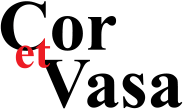Cor Vasa 2025, 67(4):422-426 | DOI: 10.33678/cor.2025.074
Induced apnea for better CT visualization of coronary arteries in children under 1 year. And is heart rate so essential?
- a Department of Functional Diagnostics, Children's Cardiac Center, Bratislava, Slovakia
- b Department of Paediatric Anaesthesiology and Intensive Care Medicine, Children's Cardiac Center, Bratislava, Slovakia
- c Department of Diagnostic and Interventional Radiology, National Heart Institute, Bratislava, Slovakia
Úvod: CT koronarografia je u detí pod 1 rok života užitočná zobrazovací technika s vysokou rozlišovacou schopnosťou. CT vyšetrenie u týchto detí zostáva pre radiológov a klinikov výzvou pre radiačnú záťaž a pohybové artefakty.
Ciele: Hodnotenie kvality CT koronarografie detí pod 1 rok života použitím kvalitatívnych a kvantitatívnych parametrov.
Materiál a metódy: Retrospektívna štúdia realizovaná v jednom centre medzi aprílom 2022 a augustom 2024. Kvalita zobrazenia koronárnych tepien bola hodnotená skúseným radiológom prostredníctvom skórovacieho systému.
Výsledky: Bolo realizovaných 10 vyšetrení u 9 pacientov. Neprítomnosť, respektíve minimálne pohybové artefakty boli dosiahnuté u väčšiny vyšetrení (90 %). U väčšiny pacientov bolo skóre hodnotenia 1, len jeden pacient mal skóre 2. Z uvedeného vyplýva, že CT koronarografia v riadenom apnoe zlepšuje kvalitu vyšetrenia. Frekvencia srdca nemá vplyv na kvalitu vyšetrenia koronárnych tepien u danej skupiny pacientov. Najlepšia fáza na vizualizáciu celého priebehu koronárnych tepien bola medzi 30 - 50 % srdcového cyklu. Avšak u jedného pacienta bola ľavá koronárna tepna, ramus interventricular anterior a ramus circumflexus lepšie vizualizované v 70 - 80 % srdcového cyklu.
Záver: CT koronarografia v riadenom apnoe reprezentuje efektívnu zobrazovaciu metódu vizualizácie koronárnych tepien u detí do 1 roka života s lepšou kvalitou vyšetrenia. © 2025, ČKS.
Klíčová slova: CT angiografia, Deti, Indukované apnoe, Koronárne artérie, Propofol
Vloženo: 25. únor 2025; Revidováno: 12. červen 2025; Přijato: 1. červenec 2025; Zveřejněno online: 2. červen 2012; Zveřejněno: 6. říjen 2025 Zobrazit citaci
| ACS | AIP | APA | ASA | Harvard | Chicago | Chicago Notes | IEEE | ISO690 | MLA | NLM | Turabian | Vancouver |
Reference
- Mahle TW, Gonzalez JH, Kreeger J, et al. Echocardiography of transposition of the great arteries. Cardiol Young 2012;22:664-670.
 Přejít k původnímu zdroji...
Přejít k původnímu zdroji...  Přejít na PubMed...
Přejít na PubMed... - Woo Goo H. State-of-the-Art CT Imaging Techniques for Congenital Heart Disease. Korean J Radiol 2010;11:4-18.
 Přejít k původnímu zdroji...
Přejít k původnímu zdroji...  Přejít na PubMed...
Přejít na PubMed... - Jadhav SP, Golriz F, Atweh LA, et al. CT Angiography of Neonates and Infants: Comparison of Radiation Dose and Image Quality of Target Mode Prospectively ECG-Gated 320-MDCT and Ungated Helical 64-MDCT. AJR 2015;204:184-191.
 Přejít k původnímu zdroji...
Přejít k původnímu zdroji...  Přejít na PubMed...
Přejít na PubMed... - Malone LJ, Morin CE, Browne LP. Coronary computed tomography angiography in children. Ped Rad 2022;52:2498-2509.
 Přejít k původnímu zdroji...
Přejít k původnímu zdroji...  Přejít na PubMed...
Přejít na PubMed... - Woo Goo H. Coronary Artery Imaging in Children. Korean J Radiol 2015;16:239-250.
 Přejít k původnímu zdroji...
Přejít k původnímu zdroji...  Přejít na PubMed...
Přejít na PubMed... - Chakravarthy M,Sunilkumar G, Pargaonkar S, et al. Induced apnea enhances image quality and visualization of cardiopulmonary anatomic during contrastenhanced cardiac computerized tomographic angiography in children. Ann Card Anaesth 2015;18:179-184.
 Přejít k původnímu zdroji...
Přejít k původnímu zdroji...  Přejít na PubMed...
Přejít na PubMed... - Saleh RS, Patel S, Lee MH, et al. Contrast-enhanced MR Angiography of the Chest and Abdomen with Use of Controlled Apnea in Children. Radiology 2007;243:837-846.
 Přejít k původnímu zdroji...
Přejít k původnímu zdroji...  Přejít na PubMed...
Přejít na PubMed... - Alonso-Gonzalez R, Swan L. Non-invasive imaging in congenital heart disease. SA Heart Journal 2013;10:592-598.
 Přejít k původnímu zdroji...
Přejít k původnímu zdroji... - Bhat V, Belaval V, Gadabanahalli K, et al. Illustrated Imaging Essay on Congenital Heart Diseases: Multimodality Approach Part I: Clinical Perspective, Anatomy and Imaging Techniques. J Clin Diagn Res 2016;10:1-6.
 Přejít k původnímu zdroji...
Přejít k původnímu zdroji...  Přejít na PubMed...
Přejít na PubMed... - Woo Goo H. Quantitative evaluation of coronary artery visibility on CT angiography in Kawasaki disease: young vs. old children. Int J Cardiovasc Imaging 2021;37:1085-1092.
 Přejít k původnímu zdroji...
Přejít k původnímu zdroji...  Přejít na PubMed...
Přejít na PubMed... - Le Roy J, Azais B, Zarqane H, et al. Selection of optimal cardiac phases for ECG-triggered coronary CT angiography in pediatrics. Phys Med 2021;81:155-161.
 Přejít k původnímu zdroji...
Přejít k původnímu zdroji...  Přejít na PubMed...
Přejít na PubMed... - Borns J, Grani C, Kadner A, et al. Symptomatic coronary anomalies and ischemia in teenagers - rare but real. Front Cardiovasc Med. 2020;7:559794.
 Přejít k původnímu zdroji...
Přejít k původnímu zdroji...  Přejít na PubMed...
Přejít na PubMed... - Na J, Chen X, Zhen Z, et al. Anomalous right coronary artery originating from the aorta: a series of nine pediatric cases. BMC Pediatr 2023;23:546.
 Přejít k původnímu zdroji...
Přejít k původnímu zdroji...  Přejít na PubMed...
Přejít na PubMed...
Tento článek je publikován v režimu tzv. otevřeného přístupu k vědeckým informacím (Open Access), který je distribuován pod licencí Creative Commons Attribution-NonCommercial 4.0 International License (CC BY-NC 4.0), která umožňuje nekomerční distribuci, reprodukci a změny, pokud je původní dílo řádně ocitováno. Není povolena distribuce, reprodukce nebo změna, která není v souladu s podmínkami této licence.





